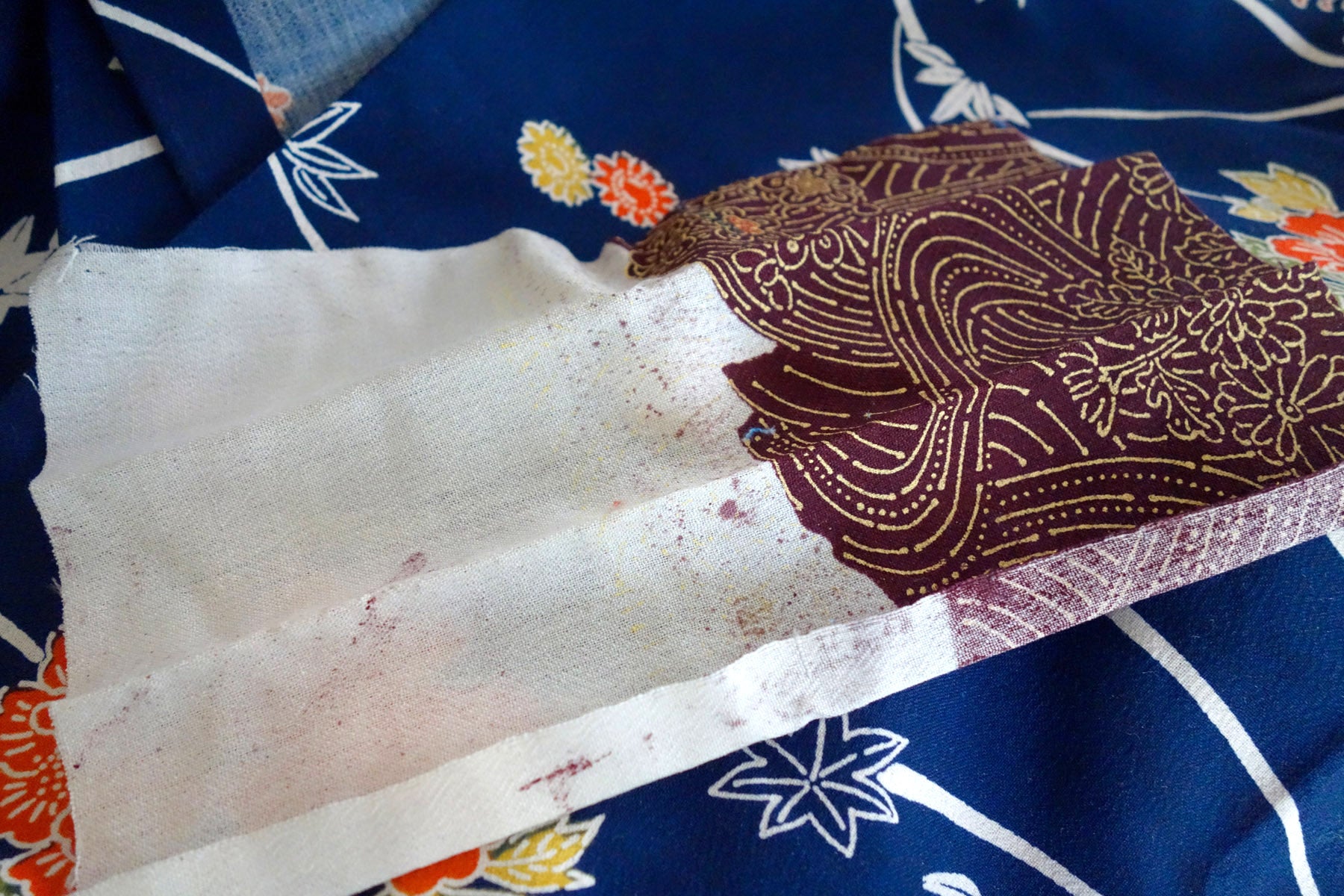By Patricia Belyea
SEATTLE WA It takes about four hours to pick out all the hand stitching in a kimono. Reclaimed fabric, silk threads, hidden knots—they all intrigue me. The meditative exercise takes me on a journey through textural time and space.
Specially woven, kimono fabric measures 13" to 16" wide. Two long rectangular pieces form the body of the kimono—with no shoulder seams and a join down the back. Shorter panels make up the wing-like sleeves. Partial-width strips of the kimono fabric create the shawl collar.
Using my Clover ripper, my joy is to deconstruct the garment stitch by stitch. Usually there is backstitching at the beginning of seams. Sometimes I bump into tacking stitches, hidden fold stitches, or gnarly knots. The heaviness of the thread changes to match the stress on the stitches when worn. So I pull out different kinds and colors of threads.
The main panels and sleeves yield about 9 yards of full-width fabric with the selvedges intact! (If the kimono needs to be narrower, the seams are wider.) Plus there are the long skinny strips from the collar.
The experience of taking something apart instead of sewing it together is tangibly different. There is no stress in worrying about the outcome. I can become wholly present in the simple act of cutting and pulling out decades-old stitches.


The t-like character with the three crossbars (below) translates to wool. So this kimono is made from 100% summer wool printed with a classic peony pattern on rich indigo blue.

This snippet of silk was found inserted into the back of the collar to give it shape. The lines on the burgundy shine with metallic gold!

After a cold-water wash, this fabric is ready to be up-cycled into clothing or home decor. Just as important as the yardage is a calm feeling from handling such alluring fabric and all the threads that once held the kimono together.

What do I do with this fabulous reclaimed fabric? I often take apart yukata, the Japanese unlined summer kimono made with hand-dyed cotton. There’s just enough yardage to construct the back of a mid-sized quilt. The vintage yukata used for the backing of Sakura Spring (from my book East-Meets-West Quilts) was bought in a used kimono shop in Kyoto.










